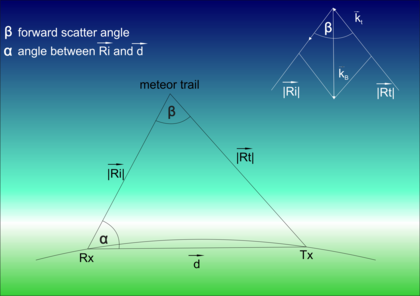Specular Meteor Radar
Meteor radars are a reliable and widely spread tool to investigate MLT dynamics. Those radars make use of the reflection of electromagnetic waves at meteor trails. These radars provide observations of mesospheric winds in the altitude range between 80 to 100 km with a reasonable temporal resolution (up to 1 hour) or to estimate the mesopause region temperature by measuring the ambiploar diffusion of the meteor trail. These systems usually consist of one transmitting antenna and a receiving array of 5 antennas to determine the position of the meteor trail (specular point along the trail) in the sky by applying interferometry. The IAP operates such meteor radars in Andenes and Juliusruh. Recently we have installed a forward scatter meteor radar in Kühlungsborn. The Multi-frequency Multi-static Agile Radar for the Investigation of the Atmosphere (MMARIA) uses the transmitter of the standard meteor radar in Juliusruh and a receiving array in Kühlungsborn. The forward scatter radar probes almost the same volume from two different observation angles. Another benefit of this system is that we increased the number of meteor detections per unit time using the same transmitter, which makes this system a cost effective complement to the existing meteor radars.

Publications
- G. Stober und J. L. Chau, A multistatic and multifrequency novel approach for specular meteor radars to improve wind measurements in the MLT region, Radio Sci., 431-442, doi:10.1002/2014RS005591, 2015.
- J. L. Chau, G. Stober, C. M. Hall, M. Tsutsumi, F. I. Laskar und P. Hoffmann, Polar mesospheric horizontal divergence and relative vorticity measurements using multiple specular meteor radars, Radio Sci., 52, 811-828, doi:10.1002/2016RS006225, 2017
- J. L. Chau, J. M. Urco, J. P. Vierinen, R. A. Volz, M. Clahsen, N. Pfeffer und J. Trautner, Novel specular meteor radar systems using coherent MIMO techniques to study the mesosphere and lower thermosphere, Atmos. Meas. Tech., 12, 2113-2127, doi:10.5194/amt-12-2113-2019, 2019.













